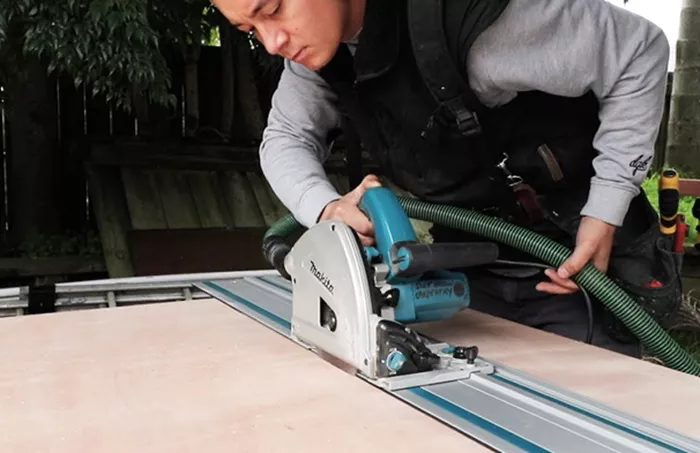The Makita track saw is renowned for its versatility and precision, making it an essential tool for both professional woodworkers and DIY enthusiasts. This article explores how the Makita track saw manages materials and thicknesses, highlighting its features and capabilities that contribute to its effectiveness.
Understanding the Makita Track Saw
The Makita track saw is designed to deliver accurate and clean cuts through a range of materials, including wood, plywood, and composites. Its design incorporates a track system that guides the saw along a predetermined path, ensuring straight and precise cuts. This section provides an overview of the key components of the Makita track saw and their roles in handling different materials.
Cutting Wood and Plywood
Precision and Clean Cuts
The Makita track saw excels in cutting wood and plywood with high precision. The saw’s track system eliminates the need for a guide rail, reducing the risk of deviations and ensuring straight cuts. The blade’s design and the saw’s high RPM (revolutions per minute) contribute to a smooth and splinter-free finish, which is essential for visible cuts on finished wood surfaces.
Adjustable Depth Settings
One of the standout features of the Makita track saw is its adjustable depth settings. This allows users to customize the cutting depth based on the thickness of the material. For wood and plywood, the saw can easily handle varying thicknesses, from thin veneer sheets to thicker boards, providing flexibility in different woodworking projects.
Bevel Cutting Capability
The Makita track saw’s bevel cutting capability adds another layer of versatility. The saw can tilt to make bevel cuts up to 48 degrees, accommodating various woodworking needs. This feature is particularly useful for creating angled joints and complex shapes in wood and plywood.
See also: From Homeowners To Professionals: Why Stihl Chainsaws Lead The Pack
Handling Composite Materials
Cutting Precision
Composite materials, such as MDF (medium-density fiberboard) and OSB (oriented strand board), often require a track saw that can handle their density and weight. The Makita track saw’s high-power motor and sharp, precision-engineered blades ensure clean cuts through these dense materials. The track system helps maintain stability and accuracy, reducing the likelihood of chipping or splintering.
Dust Collection
Cutting composites can produce a significant amount of dust and debris. The Makita track saw is equipped with an efficient dust extraction system that minimizes mess and maintains a cleaner work environment. This feature is particularly important when working with materials that generate fine dust, helping to improve visibility and reduce health risks.
Cutting Metal and Other Materials
Compatibility with Metal Cutting Blades
While primarily designed for wood and composites, the Makita track saw can be adapted for cutting metal by using specialized metal cutting blades. These blades are designed to handle the toughness of metal materials and provide clean, precise cuts. However, users should ensure that the track saw is equipped with the appropriate blade and settings for metal cutting.
Handling Different Thicknesses
For metal and other harder materials, the Makita track saw’s depth adjustment and variable speed settings come into play. These features allow users to modify the cutting speed and depth based on the material’s thickness and hardness. Proper blade selection and saw settings are crucial for achieving optimal results when cutting metals or other challenging materials.
See also: Top 5 John Deere Zero-Turn Mowers For Professional Landscapers
User Experience and Safety
Ease of Use
The Makita track saw is designed with user comfort in mind. Its ergonomic handle and balanced design make it easier to maneuver, especially when handling large or heavy materials. The track system also simplifies the cutting process by providing a clear guide and reducing the need for additional clamps or supports.
Safety Features
Safety is a priority with the Makita track saw. The saw includes features such as blade guards and anti-kickback mechanisms to enhance user safety. These features are particularly important when working with various materials and thicknesses, as they help prevent accidents and ensure a secure cutting experience.
Conclusion
The Makita track saw is a versatile and powerful tool that handles a wide range of materials and thicknesses with ease. Its precision, adjustable settings, and compatibility with different blades make it suitable for various cutting tasks, from woodworking to handling composite and metal materials. By understanding its features and capabilities, users can maximize the effectiveness of the Makita track saw and achieve professional-quality results in their projects.
Related Topics:
-
User-Friendly Vs Pro-Grade: Which Circuit Breaker Finder Suits You?
-
How To Choose The Best Mechanic Tool Set: Factors To Consider

